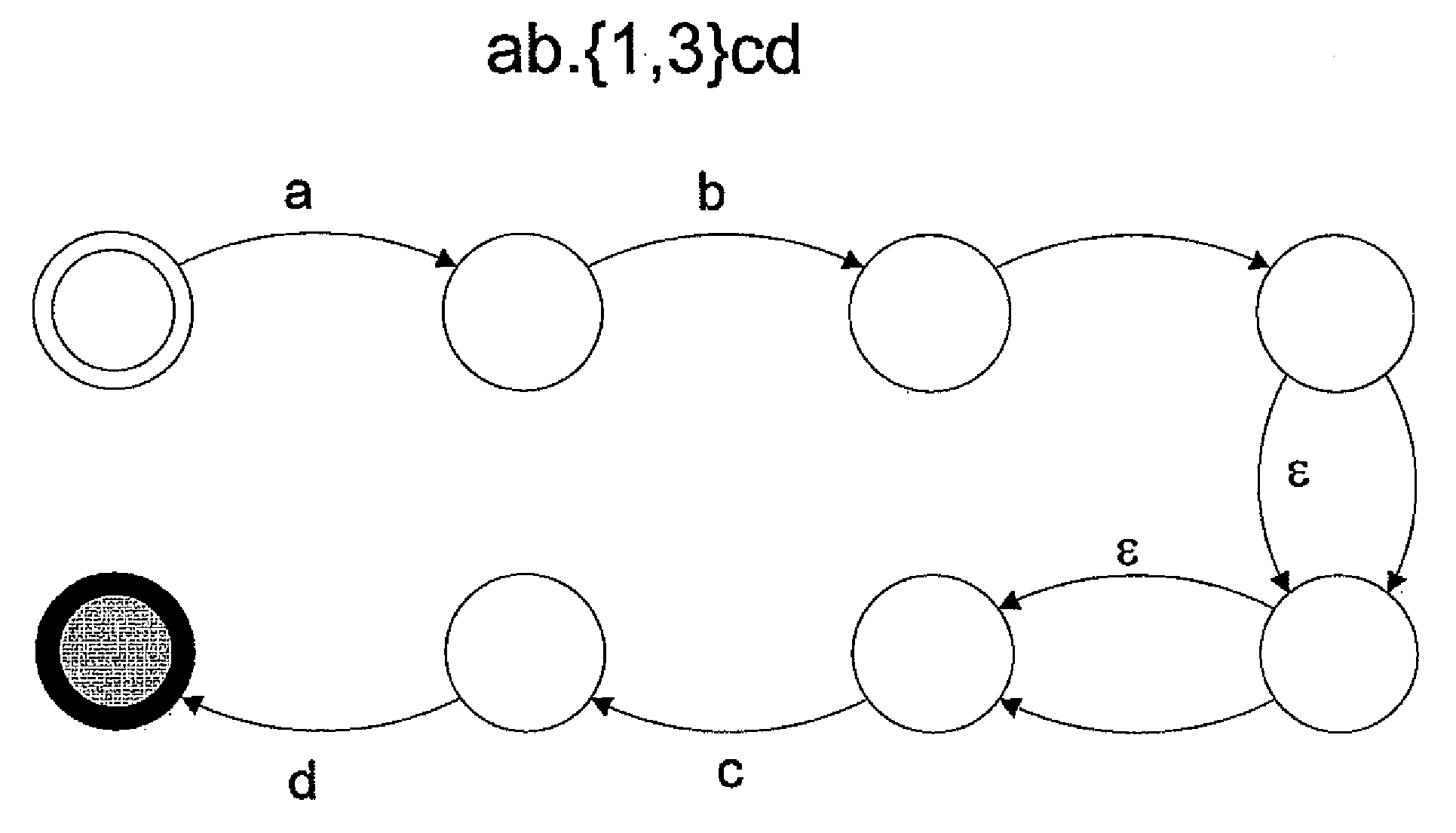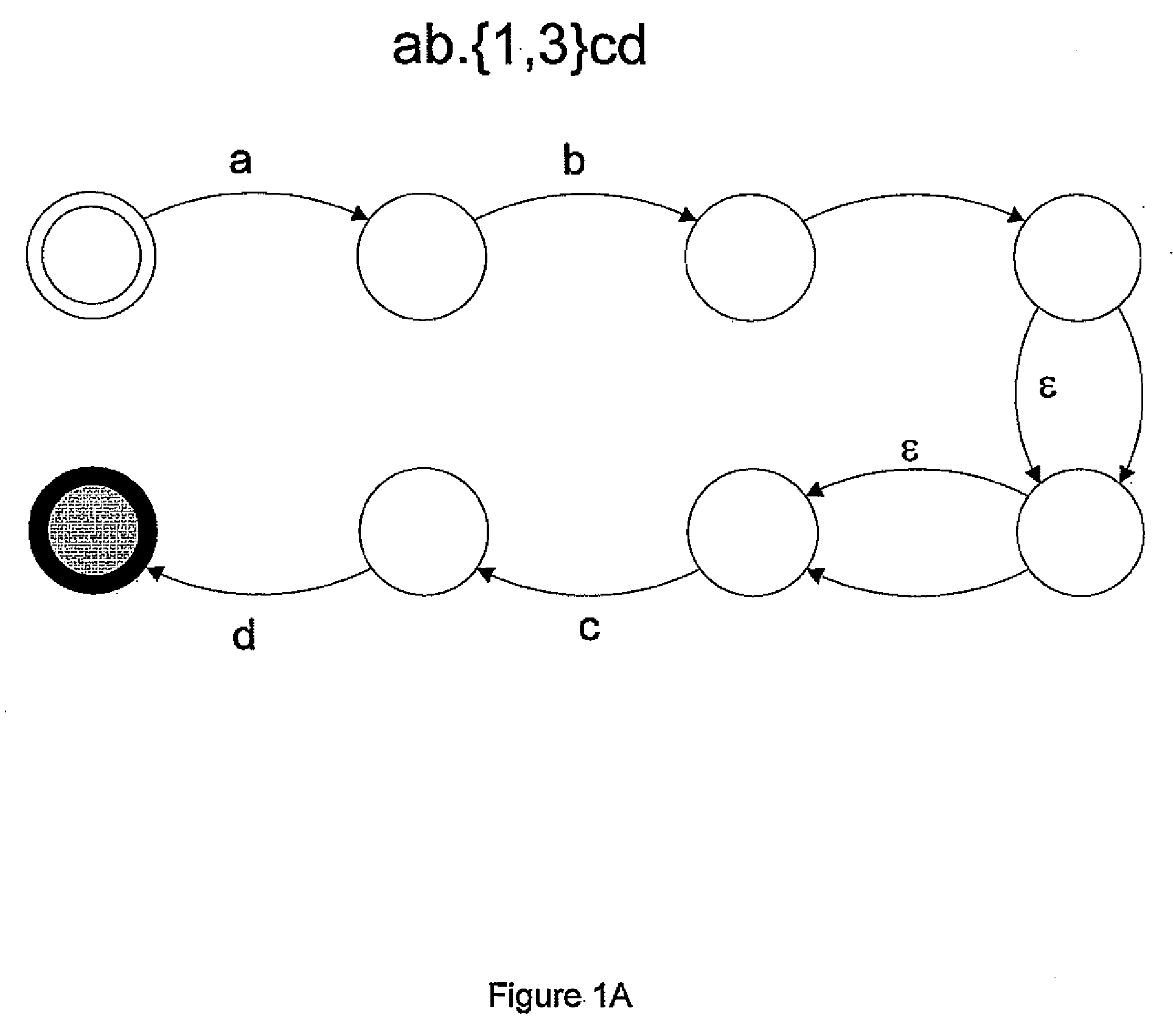Systems and methods for processing regular expressions
a technology of system and expression, applied in the field of system and expression processing, can solve the problems of many unwanted incoming information sent in the form of spam and undesired outgoing information containing corporate secrets, unfavorable access to pornographic and sports web sites by inside companies and other organizations, and the internet is rife with security threats
- Summary
- Abstract
- Description
- Claims
- Application Information
AI Technical Summary
Benefits of technology
Problems solved by technology
Method used
Image
Examples
Embodiment Construction
[0028]Embodiments of the invention will now be described with reference to the accompanying Figures, wherein like numerals refer to like elements throughout. The terminology used in the description presented herein is not intended to be interpreted in any limited or restrictive manner, simply because it is being utilized in conjunction with a detailed description of certain specific embodiments of the invention. Furthermore, embodiments of the invention may include several novel features, no single one of which is solely responsible for its desirable attributes or which is essential to practicing the inventions herein described.
[0029]In order to more clearly describe the improved systems and methods described herein, provided below are definitions of certain terms used herein.
[0030]A “character class” is a set of characters that will find a match if any one of the characters included in the set matches. For example, the character class [A-Z0-9#$%] matches any single character from A...
PUM
 Login to View More
Login to View More Abstract
Description
Claims
Application Information
 Login to View More
Login to View More - R&D
- Intellectual Property
- Life Sciences
- Materials
- Tech Scout
- Unparalleled Data Quality
- Higher Quality Content
- 60% Fewer Hallucinations
Browse by: Latest US Patents, China's latest patents, Technical Efficacy Thesaurus, Application Domain, Technology Topic, Popular Technical Reports.
© 2025 PatSnap. All rights reserved.Legal|Privacy policy|Modern Slavery Act Transparency Statement|Sitemap|About US| Contact US: help@patsnap.com



